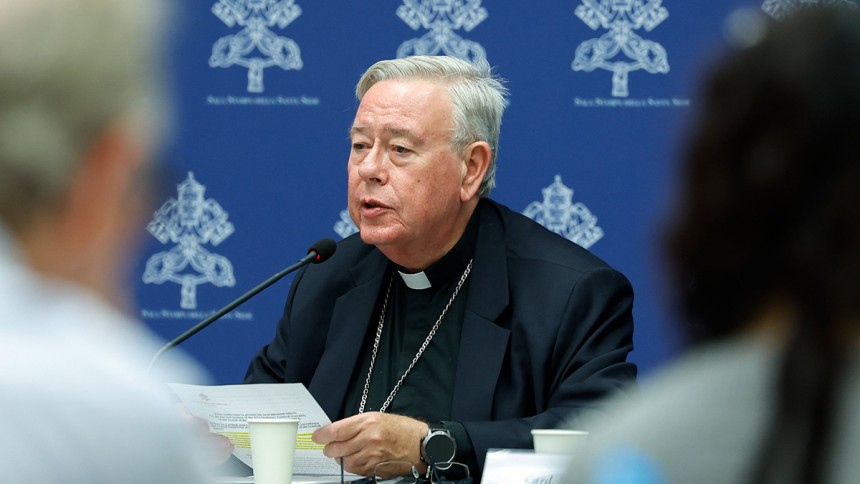
Cardinal Mario Grech, secretary-general of the synod, speaks during a news conference presenting the working document for the second assembly of ongoing the Synod of Bishops at the Vatican July 9, 2024. Photo: CNS/Lola Gomez.
Australia’s Catholic bishops have welcomed the release of the working tool for members of the Second Session of the XVI Ordinary General Assembly of the Synod of Bishops.
The document, known in Latin as the Instrumentum laboris, originated from over 100 reports provided to the General Secretariat of the Synod including one submitted by the Australian Catholic Bishops Conference.
The General Secretariat also considered reports submitted by parish priests who attended a three-day working session, which involved Australian clergy.
And more than 200 comments were received from universities, associations of the faithful and other international entities.
The Instrumentum laboris is not a magisterial document or a catechism, but a way to encourage prayer, dialogue, discernment and the “maturing of a consensus”, according to an explanatory paper.
It was written by a group of theologians as well as members and consultors of the XV Ordinary Council of the General Secretariat of the Synod.
A draft version of the document was sent to 70 people from all over the world including priests, consecrated men and women, lay people, theologians and pastoral workers, and then returned to the Ordinary Council which, after a series of amendments, approved it and transmitted it to the Holy Father for final approval.
It consists of five sections: an introduction; a section on “foundations” of the understanding of synodality; and three “perspectives” sections covering relationships, paths and places.
 |
President of the Australian Catholic Bishops Conference, Archbishop Timothy Costelloe SDB, himself a member of the Synod, noted: “The Instrumentum laboris will help guide the members of the second assembly of the synod during their meeting in October in Rome. The fruits of that meeting, and the consensus that emerges, will be entrusted to the Holy Father. He will then, after his own prayerful discernment, offer guidance and direction for the universal Church as it enters the implementation phase of the synodal journey.” While the Synod is a process of three phases - consultation of the faithful, discernment by the pastors and the implementation phase – it is already bearing fruit as churches discover the benefits of greater co-responsibility by all the baptised. |
As the document itself says: “Among the gains of the process so far, we can include having experienced and learned a method for addressing questions together, in dialogue and discernment. We are still learning how to be a missionary synodal Church, but it is a task we have learned that we can undertake with joy.”
More than a dozen Australian Catholic clergy and lay people will attend the assembly in Rome from October 2-27.

Cardinal Jean-Claude Hollerich, relator general of the synod, speaks during a news conference presenting the working document for the second assembly of ongoing the Synod of Bishops at the Vatican July 9, 2024. (CNS photo/Lola Gomez)
